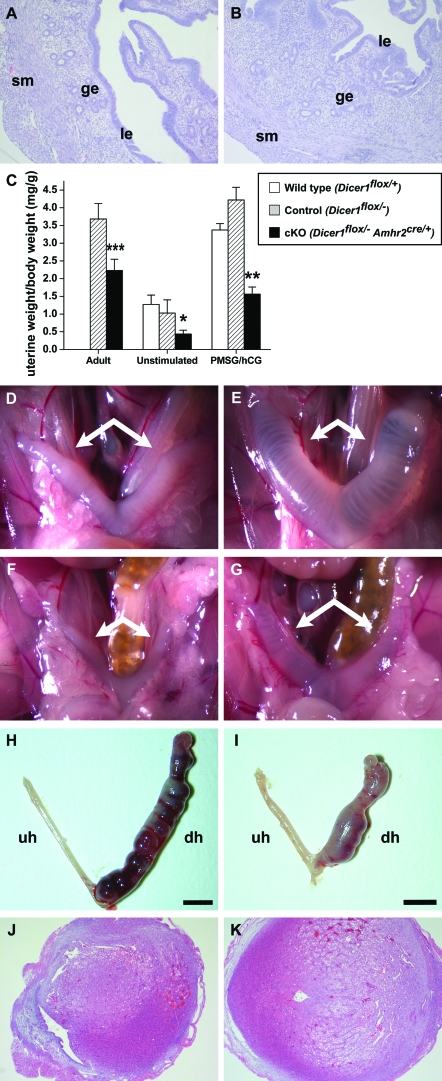Figure 6.
Histological and Functional Analysis of Dicer1 cKO Uteri
Uteri from 12-wk-old control (A) and cKO (B) females display histologically normal myometrial (sm, smooth muscle) and endometrial (ge, glandular epithelium; le, luminal epithelium) compartments. C, Uterine weights were measured and normalized to body weights for adult 10- to 12-wk-old females 3.5 d after copulation with stud males and for 3- to 4-wk-old female mice. Uteri from adult Dicer1 cKO mice (n = 6) weighed significantly less than control uteri (n = 4). In addition, uteri from unstimulated (wild type, n = 6; control, n = 4; cKO, n = 5) and PMSG/hCG-treated (n = 3 for all groups) Dicer1 cKO mice weighed significantly less than wild-type uteri; however, the relative increase in uterine weight after hormonal stimulation was comparable between wild-type (2.7-fold) and cKO (3.6-fold) females. In addition, uteri from 3- to 4-wk-old wild-type (D and E), control (data not shown), and cKO (F and G) female mice were examined after 3-d treatment with 17β-estradiol (E and G) or vehicle alone (D and F). Although uteri from cKO females weighed less than wild-type and control uteri regardless of treatment group, the relative increase in uterine weight after estradiol stimulation was similar between cKO (2.6-fold) and wild-type females (3.2-fold). The uterine decidual response in control (H) and cKO (I) mice was also examined and found to be normal, despite the fact that cKO uterine horns are shorter than those of controls. In contrast to the unstimulated horns (uh), the decidualized horns (dh) from both control (J) and cKO (K) uteri display the expected transformation of stromal fibroblasts into epithelioid cells. *, P < 0.05; **, P < 0.01; ***, P < 0.001 (Student’s t test).

